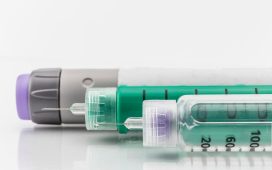Risk higher in first five years of follow-up for those treated with breast-conserving surgery alone
FRIDAY, Oct. 16, 2020 (HealthDay News) — For women with ductal carcinoma in situ (DCIS), the risk for developing subsequent ipsilateral in situ (iDCIS) and invasive breast cancer (iBC) is lower for those receiving breast-conserving surgery (BCS) and radiotherapy than for those receiving surgery alone, according to a study presented at the annual European Breast Cancer Conference, held virtually from Oct. 2 to 3.
Maartje van Seijen, from the Antoni van Leeuwenhoek Hospital in the Netherlands, and colleagues examined the long-term risk for iDCIS and invasive lesions after a diagnosis of primary DCIS. The cohort included 10,051 women with DCIS with a median follow-up of 15.7 years.
The researchers found that after 20 years of follow-up, the cumulative incidence of iBC was 2.0 percent after mastectomy, 11.6 percent after BCS plus radiotherapy, and 17.5 percent after BCS only. The 20-year cumulative incidence of iDCIS was 6.1 and 12.3 percent after BCS plus radiotherapy and after BCS alone. Compared with those who also received radiotherapy, those treated with BCS alone had an increased risk for developing iDCIS and iBC in the first five years of follow-up (hazard ratios, 3.3 and 4.1). After 10 years of follow-up, this risk difference stabilized.
“The risk of DCIS or invasive cancer recurring in these women will diminish over time, whether they had just the breast-sparing surgery or breast-sparing surgery with radiotherapy. This study shows that, overall, the addition of radiotherapy gives women the best chances,” van Seijen said in a statement.
Copyright © 2020 HealthDay. All rights reserved.








